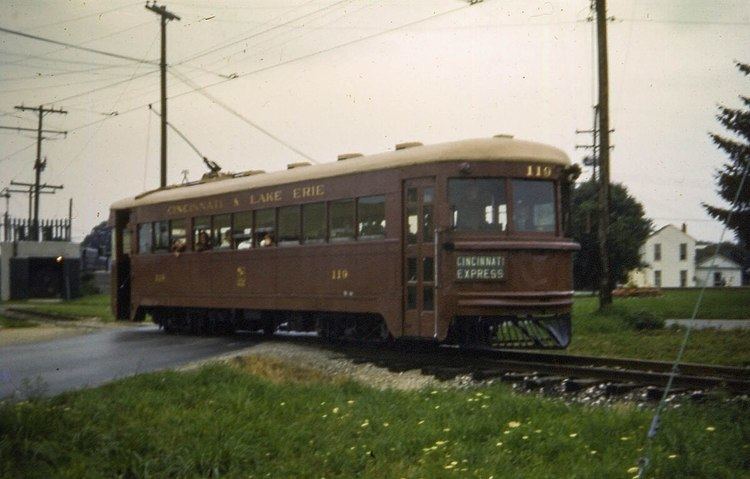In service 1929-53 Number built 20 Width 8 ft 10 in (2,692 mm) | Car length 44 ft 9 in (13,640 mm) | |
 | ||
Operator(s) Cincinnati and Lake Erie RailroadCedar Rapids and Iowa City RailwayLehigh Valley Transit Company | ||
The Red Devil was a high-speed interurban streetcar built by the Cincinnati Car Company for the Cincinnati and Lake Erie Railroad (C&LE) in 1929–1930. They saw service throughout Ohio in the 1930s. After the failure of the C&LE in 1939 they saw service with the Cedar Rapids and Iowa City Railway (CRANDIC) and the Lehigh Valley Transit Company. Several have been preserved.
Contents
Design
The Red Devils were among the first lightweight interurban trolleys with side plates of aluminum. They had a toilet, luggage compartment, and up to 44 seats. The construction had some weaknesses. The riveting of aluminum plates to a steel frame produced an electrolytic reaction that gave rise to corrosion in the side panels and the front and rear dashers. The C&LE replaced some of the aluminum plates with steel. The cars featured Art deco styling and a distinctive bright red paint scheme. Half of the cars were outfitted as parlor cars with first class seating.
Service
The Red Devil's commercial speed was 90 mph (145 km/h). Not only was it the fastest interurban of its time, it outpaced even the fastest conventional train in commercial traffic, the 80 mph (129 km/h) Cheltenham Spa Express and was almost as fast as the German 160 km/h (99 mph) Fliegender Hamburger, which was inaugurated in 1933. (see Land speed record for rail vehicles#Scheduled trains).
In 1930, a race was organized between a Red Devil and a plane. The stunt's result was that the interurban car ran at 97 mph (156 km/h) – and won.
Competition with a growing population of automobiles riding on state paved highways and the financial impact of the Depression led to a decline in C&LE passenger business. The freight business collapsed as the C&LE's interchange partners went out of business. The C&LE ceased operations in 1939. The innovative Red Devils were sold after abandonment: six to the Cedar Rapids and Iowa City Railway (CRANDIC) and thirteen to the Lehigh Valley Transit Company.
